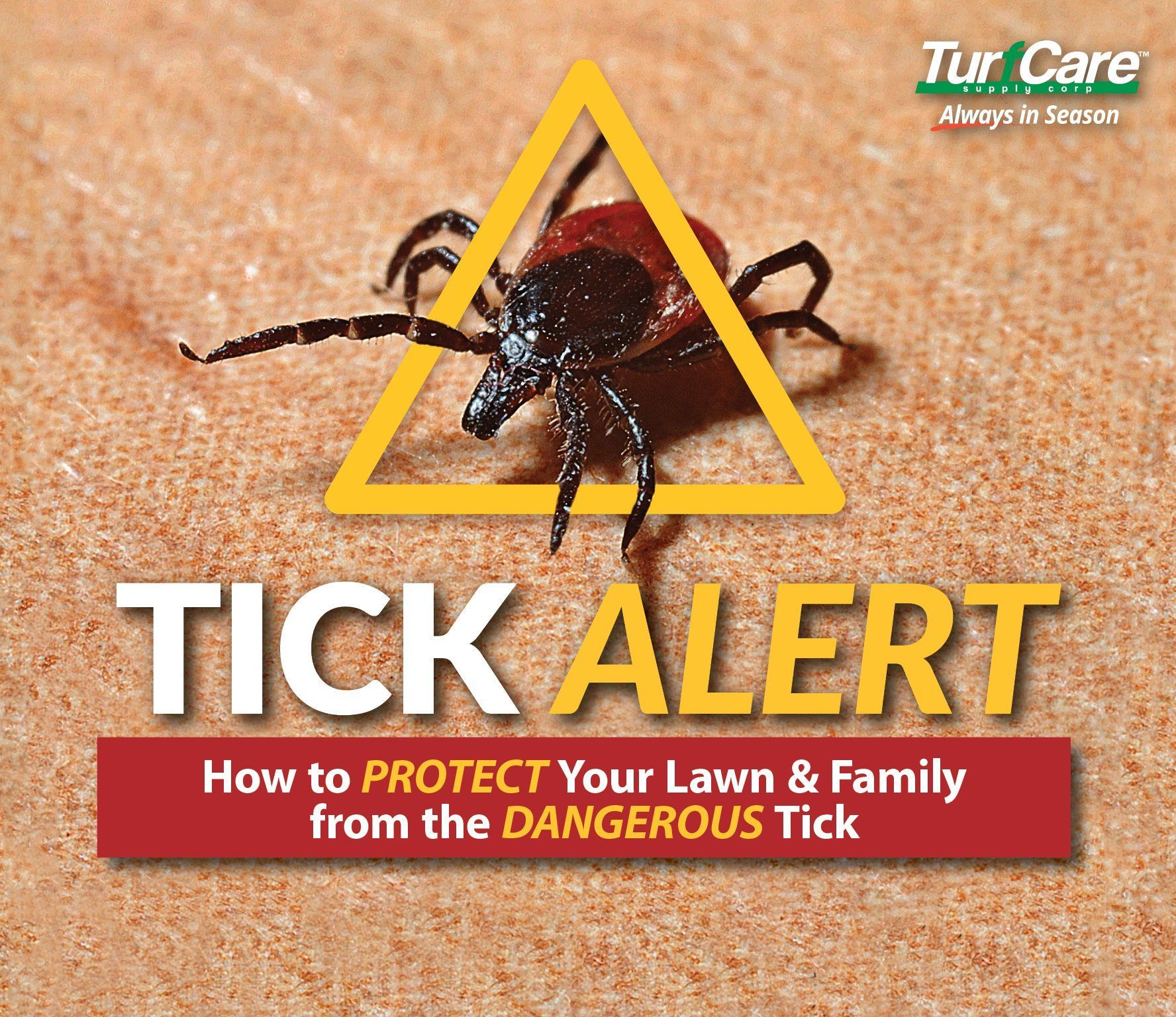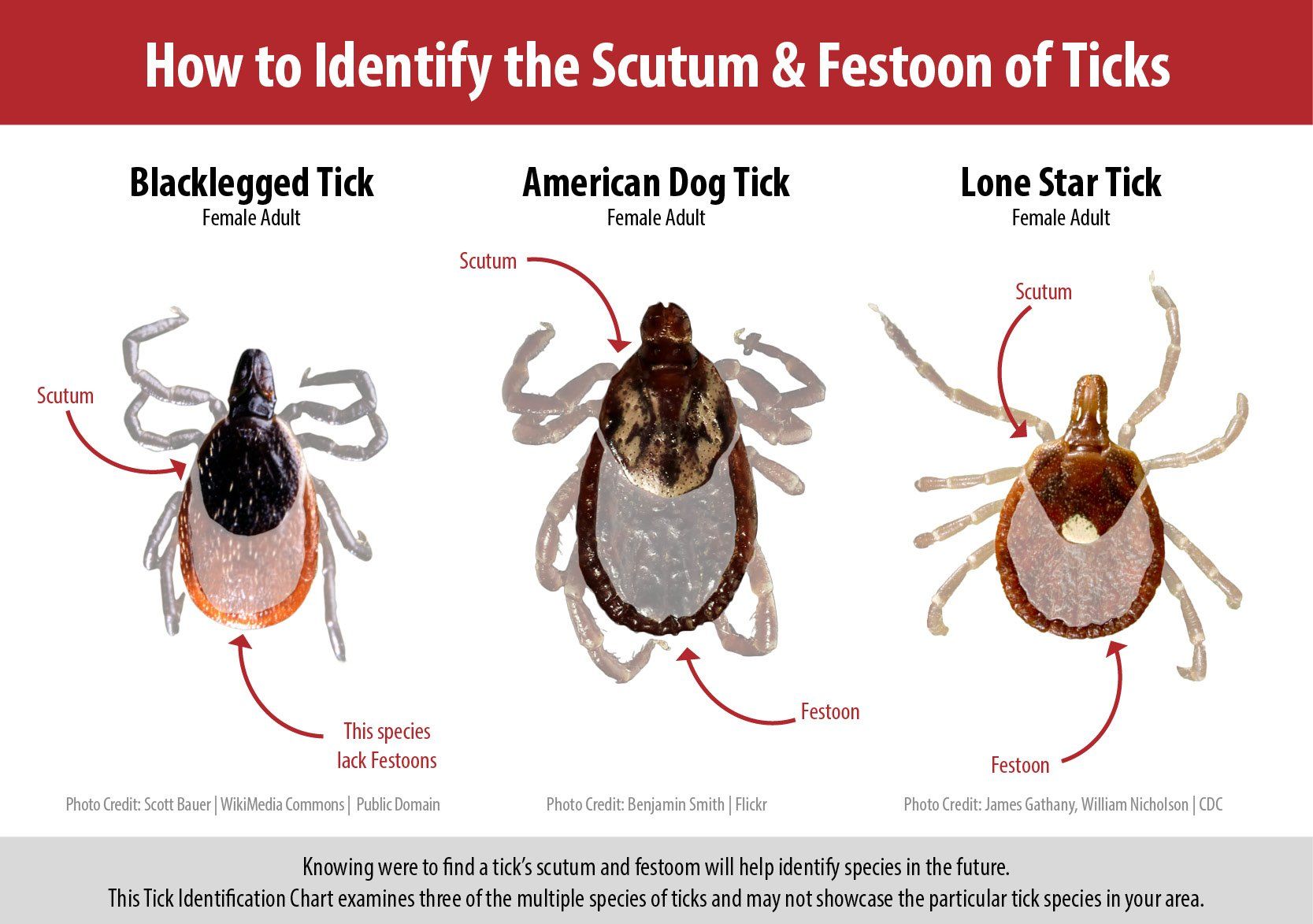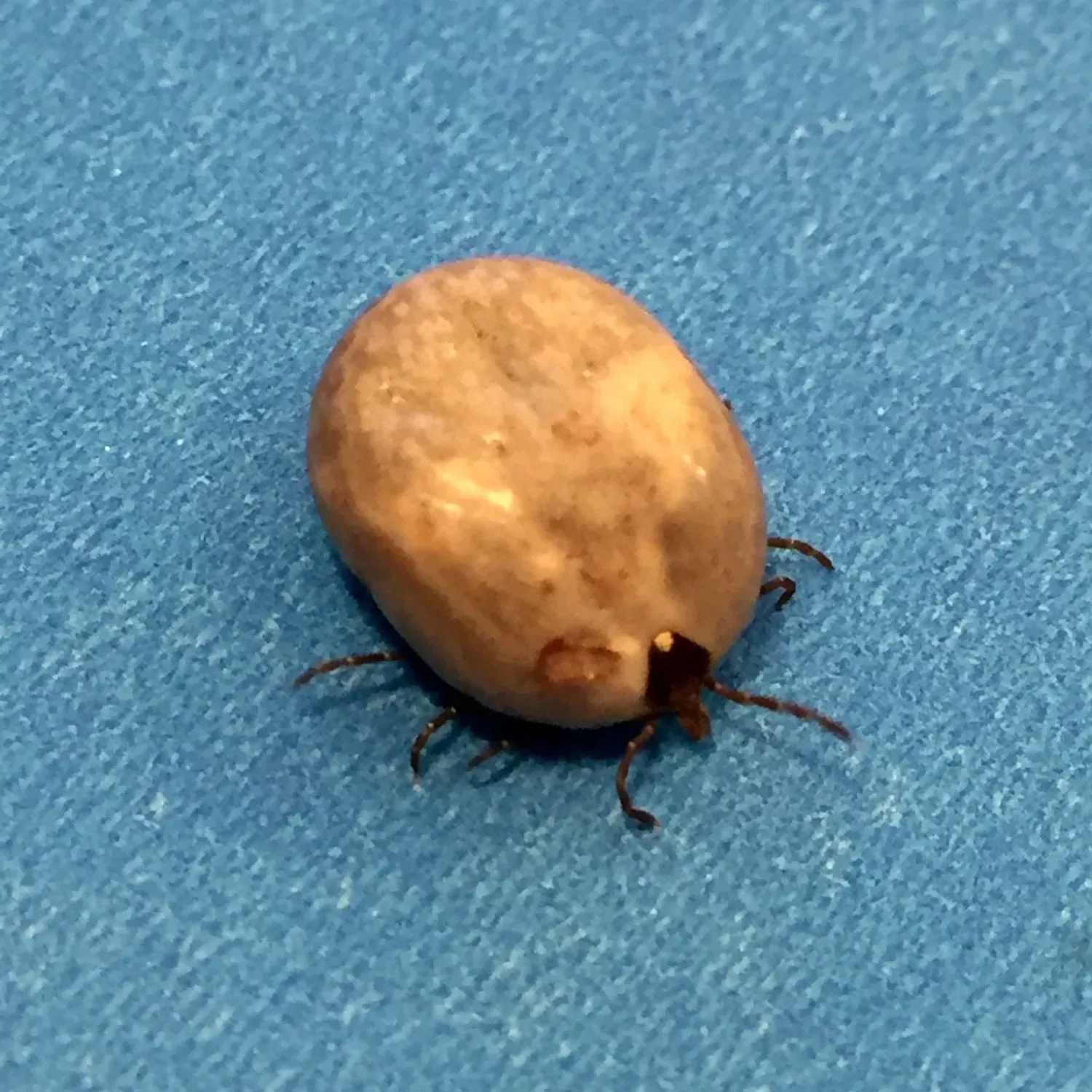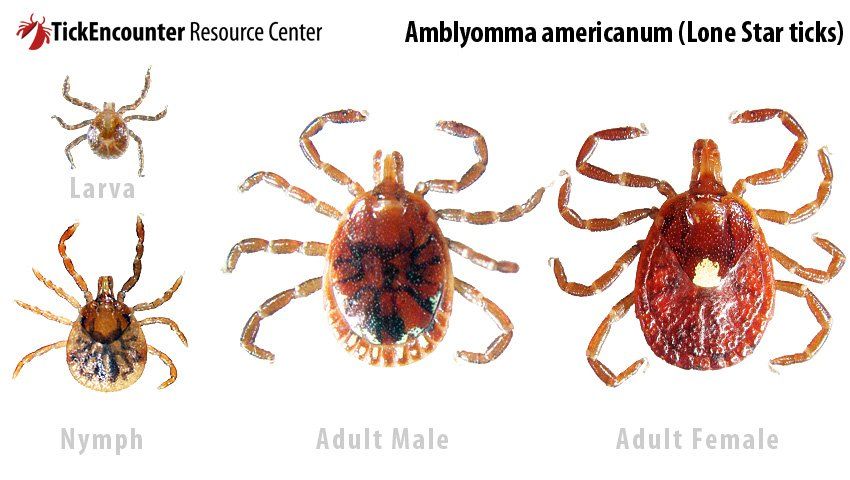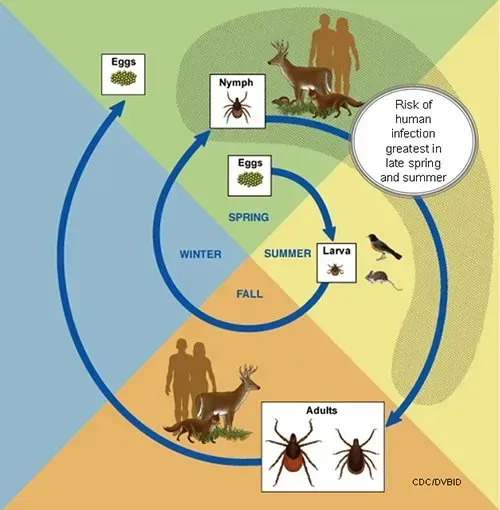ENGORGED LONE STAR TICK
If a tick is engorged from a feeding, its Scutum can still be seen to identify the tick species. Notice how the Lone Star Tick's (Image to the left) Scutum is still present although the festoon is not.
PREFERRED ENVIRONMENT
A tick’s preferred environment depends largely on its favored host. In general, ticks can be found in wooded areas, tall grass, brush, piles of leaves, woodpiles, underneath ground covering plants and on or around stone walls near favored hosts as well as in lawns and shrubs of surrounding areas. Some ticks can even be found in the dens, nests and burrows for their hosts! Generally, ticks seek out vegetation at the height of the preferred host. It’s important to understand that ticks are susceptible to drying out and seek environments that have a higher humidity to survive. For a better understanding of ticks in your area and their potential habitat, check out The University of Rhode Island’s Tick Encounter Resource Center provides a Current Tick Activity Chart to help identify the ticks most prevalent in the area.


